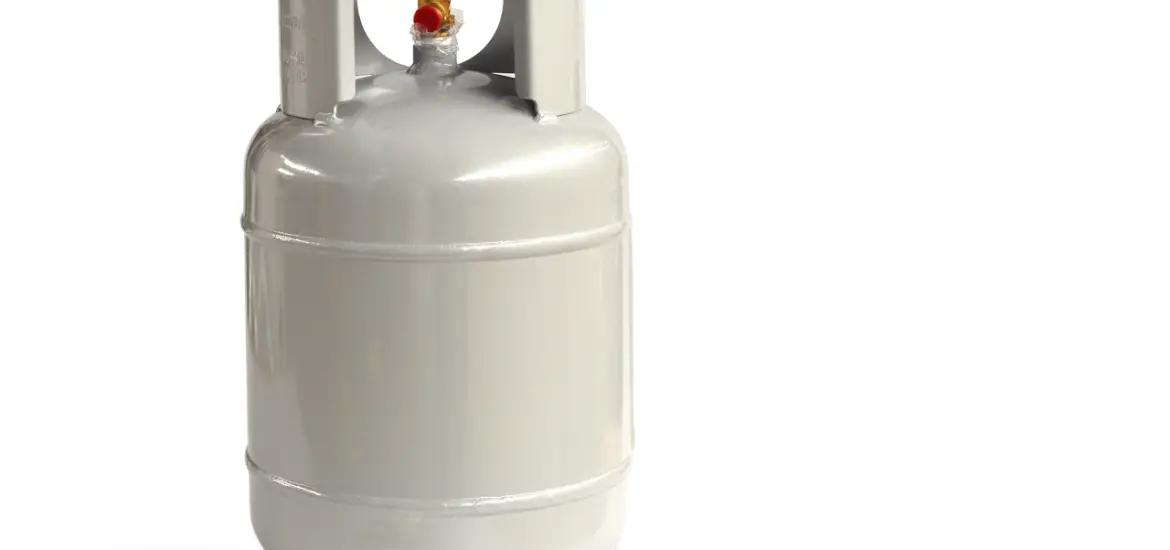Refrigerant R508B is the stuff of legends in the world of ultra-low temperature applications. It’s been the go-to for everything from scientific to medical equipment thanks to its non-flammable, low toxic, and powerfully cool nature. Get comfy, because we’re about to embark on a journey through R508B’s composition, applications, pros and cons, safety measures, and environmental impact. So, stick around for a cool adventure!

Table of Contents
What is Refrigerant R508B?
The Basic Composition of R508B
Here’s a fun fact: refrigerant R508B isn’t just one thing; it’s a blend of two components. Specifically, it’s a mix of pentafluoroethane (HFC-125) and octafluoropropane (HFC-218). Kinda sounds like a science experiment, doesn’t it?
Chemical Elements in R508B
What’s in a name? Well, for R508B, its name hides a clue to its composition. You see, those ‘HFC’ bits in its components? They stand for hydrofluorocarbons, compounds made up of hydrogen, fluorine, and carbon. These are the little guys doing the heavy lifting when it comes to keeping things cool.
Physical Properties of R508B
Now, you can’t see or touch R508B (or any refrigerant for that matter) without some serious equipment. But if you could, you’d find it’s a colorless gas at room temperature, and it’s denser than air. Oh, and did I mention it’s odorless too?
History and Evolution of R508B
Did you know that R508B was developed as a replacement for other refrigerants that were harmful to our dear old ozone layer? And it’s been keeping things chill since the 1990s. Quite a legacy, wouldn’t you say?
Common Applications of Refrigerant R508B
Ultra-Low Temperature Refrigeration
Usage in Medical Equipment
Turns out, R508B is quite the life-saver. Literally! It’s used in medical freezers that store crucial things like vaccines and biological samples. So, in a way, this refrigerant has a hand in keeping us healthy.
Usage in Scientific Research Equipment
Ever think about how scientists keep stuff super cold for their experiments? Well, R508B is often their secret weapon. It’s used in equipment for various low-temperature scientific applications, from studying superconductors to simulating outer space conditions!
Industrial Use of R508B
Aside from the science and medical fields, R508B has found its way into industrial refrigeration too. We’re talking climate test chambers, low-temperature process cooling, the works!
If you would like to read more in-depth articles on refrigerants, click here – Articles on Refrigerants: The Ultimate Guide to Understanding Them
Advantages of Using Refrigerant R508B
High Efficiency in Cooling
How R508B’s Properties Contribute to Its Efficiency
When it comes to chilling out, R508B is the champ. Thanks to its physical and chemical properties, it’s able to transfer heat extremely effectively. What’s that mean for you? Your cooling systems work less, but cool more. How’s that for a win-win?
Non-flammability and Low Toxicity
Safety Characteristics of R508B
You know what’s better than a high-performing refrigerant? A safe one! R508B is both non-flammable and has low toxicity, making it a safer choice for various applications. Cool and safe, who could ask for more?
Long-Lasting Performance
R508B doesn’t just do a great job; it keeps doing it for a long time. Its stability and compatibility with different materials mean it can keep cooling systems running smoothly for years on end. Impressive, right?
Safety Measures When Handling Refrigerant R508B
Storage and Handling Precautions
Guidelines for Safe Storage
Even though R508B is safer than some refrigerants, that doesn’t mean you can store it just anywhere. Proper ventilation, no direct sunlight, and keeping it away from heat sources – that’s the recipe for safe storage. Remember, safety first!
Best Practices for Handling R508B
Handling R508B requires care and attention, too. Always use protective gear, keep it away from open flames, and ensure good ventilation. Sounds a lot like a superhero’s instructions, doesn’t it?
What to Do in Case of Accidental Exposure
First Aid Measures
Accidents happen, even with the best of precautions. In case of exposure, move to fresh air, rinse any contacted skin, and seek medical attention. Let’s hope you’ll never need to use this info, but it’s good to know, right?
Environmental Impact of Refrigerant R508B
Ozone Depletion Potential (ODP)
How R508B Affects the Ozone Layer
One of the biggest wins for R508B is that it’s ozone-friendly. Unlike its predecessors, R508B doesn’t deplete the ozone layer. So, it helps us keep things cool without harming our protective shield in the sky.
Global Warming Potential (GWP)
R508B’s Contribution to Global Warming
The one chink in R508B’s armor is its Global Warming Potential (GWP). It’s high, meaning it contributes to global warming when released into the atmosphere. Just like every hero has a flaw, so does R508B.
The Future of Refrigerant R508B
Regulations Affecting R508B Usage
Current Regulations and Their Impact
With its high GWP, R508B has caught the eye of regulators. Some regions, like the European Union, are limiting its use. How this will shape the future of R508B, only time will tell.
Alternatives to Refrigerant R508B
Future Trends in Refrigeration Technology
With all the regulatory attention, alternatives to R508B are on the horizon. Refrigerants with lower GWPs are emerging as promising options. Could one of them dethrone R508B? Watch this space!